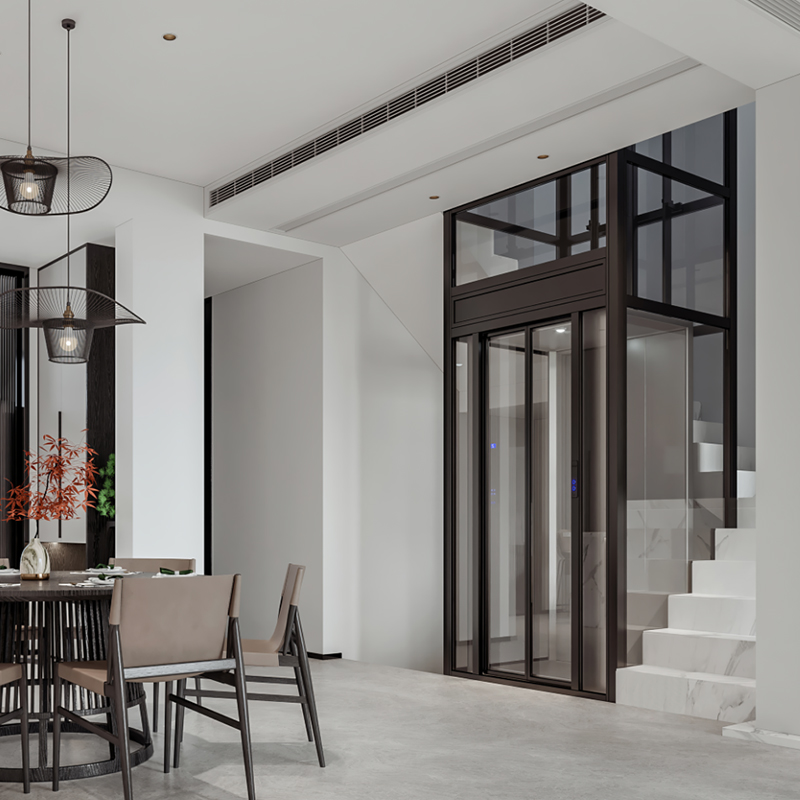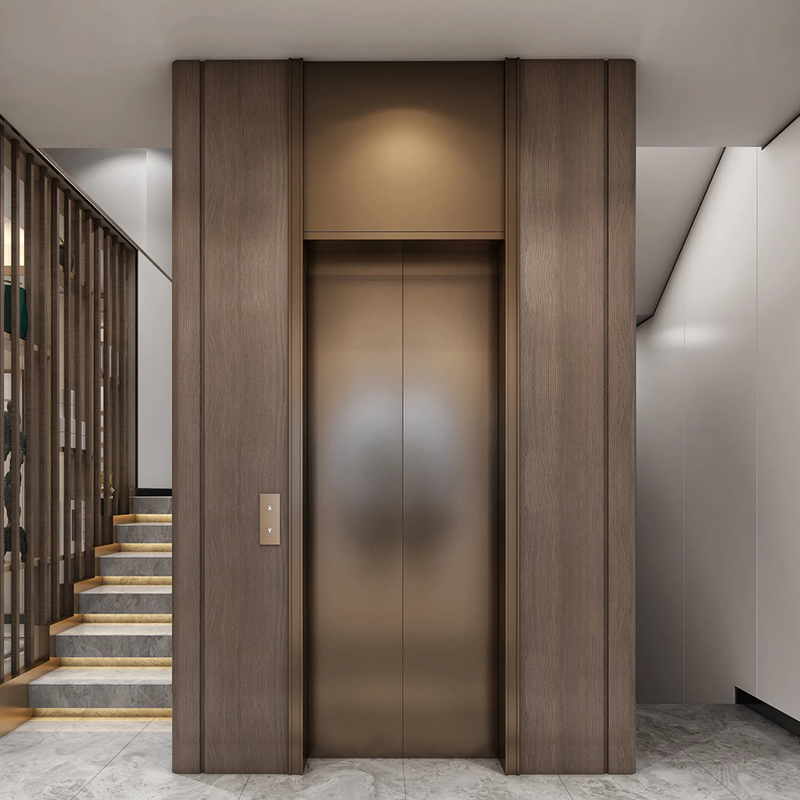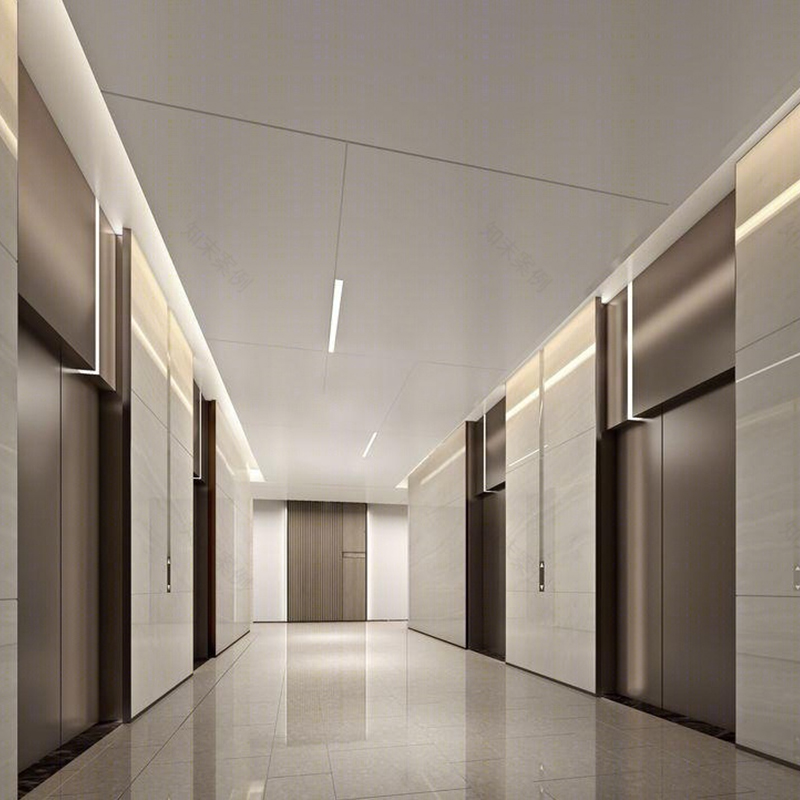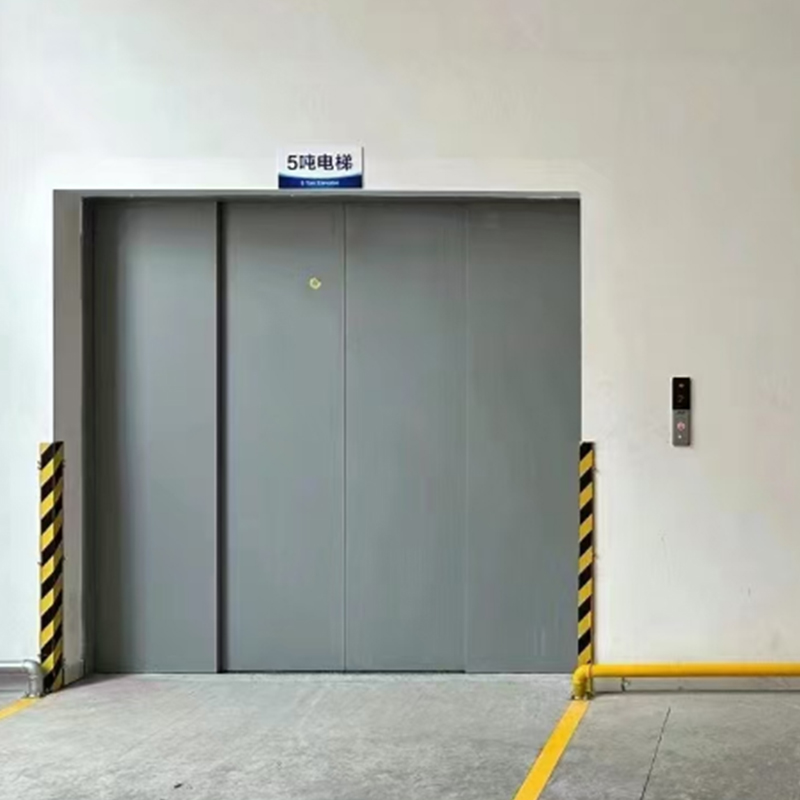
Traction Passenger Elevator door system, how to become a solid barrier for safe travel?
Posted by Admin | 01 May
Composition and coordinated operation of door system
Elevator doors are mainly divided into car doors and floor doors. The car door is installed at the entrance and exit of the traction passenger elevator car, directly in contact with passengers; the floor door is installed at the entrance and exit of each floor elevator, and cooperates with the car door. The two are closely connected through the door lock device to form a safe and reliable barrier. When the elevator runs to the target floor and stops accurately, the control system will send a door opening signal. The car door machine responds first, driving the car door to slide and open along the guide rail to both sides, usually at a speed of about 0.2-0.3 meters per second. The car door opening action is mechanically and electrically connected to the door lock device, and synchronously drives the floor door to open smoothly. The whole process is smooth and coordinated, allowing passengers to enter and exit the elevator smoothly.
When the door is closed, the process is the opposite. The control system sends a door closing command, and the car door machine drives the car door to close to the middle. When the car door is about to be completely closed, its speed will gradually decrease to avoid a large impact when closing the door. At the same time, the floor door is also closed synchronously under the drive of the car door. When the car door and the floor door are fully closed, the door lock device will automatically lock to prevent the door from accidentally opening during the operation of the elevator.
Door lock device: core safety guarantee
The door lock device is the core component of the door system. It is like a sophisticated mechanical and electrical combination lock. The mechanical lock hook part consists of a lock hook, a lock stopper, a lock hook roller, etc. When the door is closed, the lock hook tightly hooks the lock stopper under the action of the spring to form a mechanical lock, which withstands various external forces that the door may be subjected to during the operation of the elevator, ensuring that the door will not open due to shaking or vibration.
Electrical interlocking is another safety line of the door lock device. Each door is equipped with an electrical interlock switch. Only when the mechanical lock hook is fully engaged and the electrical interlock switch is closed, the elevator control system will receive a signal that the door is closed and locked, allowing the elevator to start running. If the electrical interlock switch of any door is abnormally disconnected during the operation of the elevator, the elevator control system will immediately trigger the safety brake device to stop the elevator in an emergency to avoid danger.
For example, in some old elevator renovation cases, the safety of the elevator door system has been greatly improved by upgrading the door lock device, using new high-strength lock hook materials and more sensitive and reliable electrical interlocking components. There was once an office building built in the 1990s, where the elevator door lock frequently malfunctioned, and occasionally the door would be slightly open during the operation of the elevator. After replacing the advanced door lock device, such problems were completely solved, ensuring the safety of many office workers in the building.
Safety protection device: multiple lines of defense to protect passengers
In order to prevent accidents involving people or objects, the elevator door system is equipped with a variety of advanced safety protection devices.
Light curtain protection is one of the most widely used. The light curtain is usually installed between the car door and the floor door. It consists of an infrared transmitting tube and a receiving tube to form a dense infrared light curtain. When an object blocks any beam of light in the light curtain, the receiving tube cannot receive the signal, and the light curtain controller will immediately send a signal to the door machine control system to stop closing and reopen the door immediately. The light curtain has a large number of light beams, generally ranging from dozens to hundreds of beams, which can effectively detect objects of various shapes and sizes, and even very small objects can be accurately identified.
The safety touch panel is also one of the important safety protection devices. It is installed on the edge of the car door. When the door touches an obstacle during the closing process, the safety touch panel will be squeezed and deformed. The micro switch in the touch panel will be triggered, and the signal will be transmitted to the door machine control system, so that the door will immediately open in the opposite direction. The safety touch panel has good elasticity and sensitivity, and can respond quickly when it touches an object slightly to avoid causing harm to passengers.
The pressure sensor is installed on the edge and bottom of the door. By detecting the pressure changes on the door during the closing process, it can determine whether there is a clamping situation, which further improves the safety and reliability of the door system.
Daily maintenance and troubleshooting of the door system
Daily maintenance of the door system is essential to ensure its safe and reliable operation. Maintenance personnel need to conduct a comprehensive inspection and maintenance of the door system regularly. The first is cleaning work. Regularly clean the dust and debris in the car door and floor door track to prevent these foreign objects from affecting the normal sliding of the door. At the same time, check and lubricate the transmission parts of the door machine, such as belts, chains, gears, etc., to ensure smooth operation of the door machine and reduce wear and noise.
The door lock device is also a focus of maintenance. Regularly check the wear of the lock hook and lock stop. If there are severely worn parts, replace them in time. Clean and debug the electrical interlock switch to ensure that it has good contact and sensitive and reliable action. In addition, it is necessary to perform functional tests on safety protection devices such as light curtains and safety touch panels to simulate various clamping conditions and check whether the door system can respond correctly in time.
Although the door system has been carefully designed and strictly maintained, it occasionally fails. Common faults include the door cannot be opened or closed, the door is stuck during operation, and the light curtain malfunctions. When the door cannot be opened, it may be a door lock failure, a door machine control system failure, or a power problem. The maintenance personnel need to first check whether the door lock is unlocked normally, and if necessary, repair or replace the door lock. For door machine control system failures, professional diagnostic equipment is needed to read the fault code, determine the cause of the fault and repair it. If it is a power problem, check whether the power line is loose or damaged, and repair it in time.
When the door is stuck, there may be foreign objects in the track, the door pulley is worn, or the door machine drive device is faulty. The maintenance personnel need to clean the foreign objects in the track, check the wear of the door pulley, and replace the door pulley if necessary. For the failure of the door machine drive device, the motor, inverter and other components need to be inspected and repaired.
The malfunction of the light curtain may be due to dust or foreign objects blocking the surface of the light curtain, and the failure of the internal components of the light curtain. The maintenance personnel need to clean the surface of the light curtain to ensure that there is no dust and foreign objects. If the problem persists, the internal components of the light curtain need to be inspected and replaced.
When dealing with door system failures, maintenance personnel must strictly abide by the safety operating procedures to ensure their own safety. During the maintenance process, obvious warning signs should be set to prevent passengers from operating incorrectly. At the same time, the failure should be recorded in detail, including the failure phenomenon, failure cause, maintenance measures and maintenance time, so that the operation status of the door system can be analyzed and summarized in the future.
-
 Founding Road, Qidu Linhu Economic Zone, Wujiang City, Jiangsu Province, China
Founding Road, Qidu Linhu Economic Zone, Wujiang City, Jiangsu Province, China
-
 [email protected]
[email protected]
-
 +86 17701557926/+86 0512-63818375
+86 17701557926/+86 0512-63818375


 En
En English
English русский
русский Español
Español عربى
عربى





